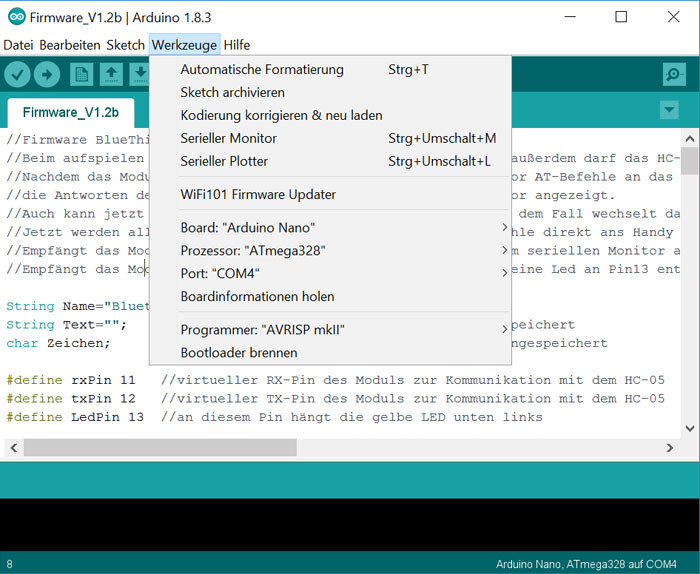The Pretzel Board Bluething: now with Bluetooth
Installation
I was relieved to find that installation of the environment on a Windows PC was a breeze, even if like me, you haven’t already got the Arduino IDE installed on your system. First you need to visit www.arduino.cc, select the OS version that your computer is running and click any boxes to accept the installation. Now a click on the Windows driver ‘CH341SER.EXE’ and Windows responds with ‘Board Recognized’ when it is plugged into the USB port. This port connection requires an ordinary USB cable with the normal USB-A connector on the PC side and the micro USB-B connector at the board end of the cable. It’s exactly the same cable you would use to charge your smartphone or similar device from a USB port. I can’t imagine you haven’t got at least one such cable lying around collecting dust, even if you are an Apple devotee. Franzis also make this assumption and have not supplied one, that’s one fewer superfluous cable for landfill.
The first thing to do in the IDE when the Bluething board is plugged in is to select the board type, click on ‘Tools’ and scroll down to select ‘Arduino Nano’ and then select ‘ATmega328’. The virtual serial port is then assigned, in this case, as you can see; ‘COM4’ is used and now we are ready to go.
At the drop-down under ‘Tools’ click on the ‘Serial Monitor’ option and boot the Arduino Nano with the firmware sketch to configure the board and Bluetooth module. Here is the exchange in the serial monitor with any blank lines removed:
Initialisiere...
Konfiguriere HC-05 Modul:
AT+ORGL
OK
AT+RMAAD
OK
AT+ADDR?
+ADDR:2016:5:101576
OK
Bluething101
AT+NAME=Bluething101
OK
AT+UART?
+UART:38400,0,0
OK
AT+VERSION?
+VERSION:hc01.comV2.1
OK
AT+RESET
OK
AT+INIT
OK
AT+DISC
+DISC:NO_SLC
OK
AT+STATE?
+STATE:DISCONNECTED
OK
Konfiguration erfolgreich!
Die gelbe Led an Pin13 sollte jetzt konstant leuchten. Es koennen ueber die Konsole AT-Befehle an das Modul gesendet werden.
Der Bluetoothname des Moduls lautet: "Bluething101" , das Passwort lautet:"1234"
Das Modul kann jetzt auch mit einem Handy gekoppelt werden, alle empfangenen Texte werden angezeigt, alle gesendeten Befehle gehen dann direkt ans Handy (wie im COM Modus).
Sollte der String "Led an" oder "Led aus" empfangen werden, reagiert die Led an Pin13 entsprechend (egal ob vom seriellen Monitor, oder vom Handy).
Read full article
Hide full article


Discussion (0 comments)